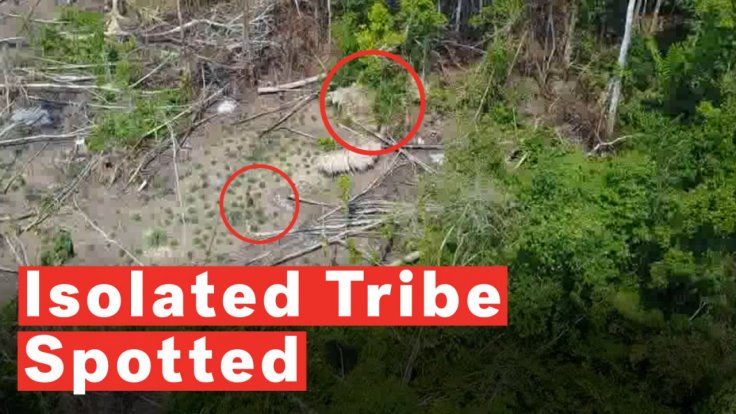
A shrinking rain forest, the largest in the world, is the home to several ancient tribes who still live off the land, hunting and gathering as they roam the massive labyrinth that is the Amazon. Of them, are the Awá, a tribe that National Geographic calls the "most endangered" in the world. They are a few of the still "uncontacted" tribes that still exist in the Amazon today.
The tribe itself, according to the NatGeo report, live in a reserve in the Maranhão forest in Brazil. They hunt using bows and arrows, eat armadillos and honey and stay in the forest, away from "modern" humans.
They practice a mix of hunting, foraging, farming, and fishing, but there are isolated nomadic Awá people who survive mainly on foraging and hunting. The tribes folk live constantly on the move and flee from the loggers and their loud machines, drug traffickers, and gold prospectors, notes the report. During the hot months, they also keep away from the raging wildfires of the region.
Now, because of the rampant nature and speed at which the forests are being felled, they are confined to the forest's core making the Awá are "especially vulnerable", explains the report. There are about 50 to 100 tribes in the Amazon that are still uncontacted and their numbers are nearly 5,000, most of them face rising threats.
Apart from these tribes in the Amazon, only Paraguay, New Guinea, and Indian Ocean's Sentinel tribe remain uncontacted in the whole world. These are people who have lived through the industrial age of humanity and yet stick to their ancient ways, completely isolated.
The few times Awá have interacted with outsiders, the report points out that, has resulted in violence against them. There are about 600 Awá left, a small section of them, around 60 to 80, still lead nomadic lives. Gathering wild honey and babassu nuts, hunting with their olden bows and arrows, they rely entirely on the forest for their livelihood.
Over 75 percent of Maranhão original forest is lost—the region inside the Amazon— and valuable timber can only be right now found in the protected Arariboia indigenous land where the non-nomadic Awá have set up small villages. While cutting down trees for timber is illegal here, illegal felling is still rampant, notes the report.









